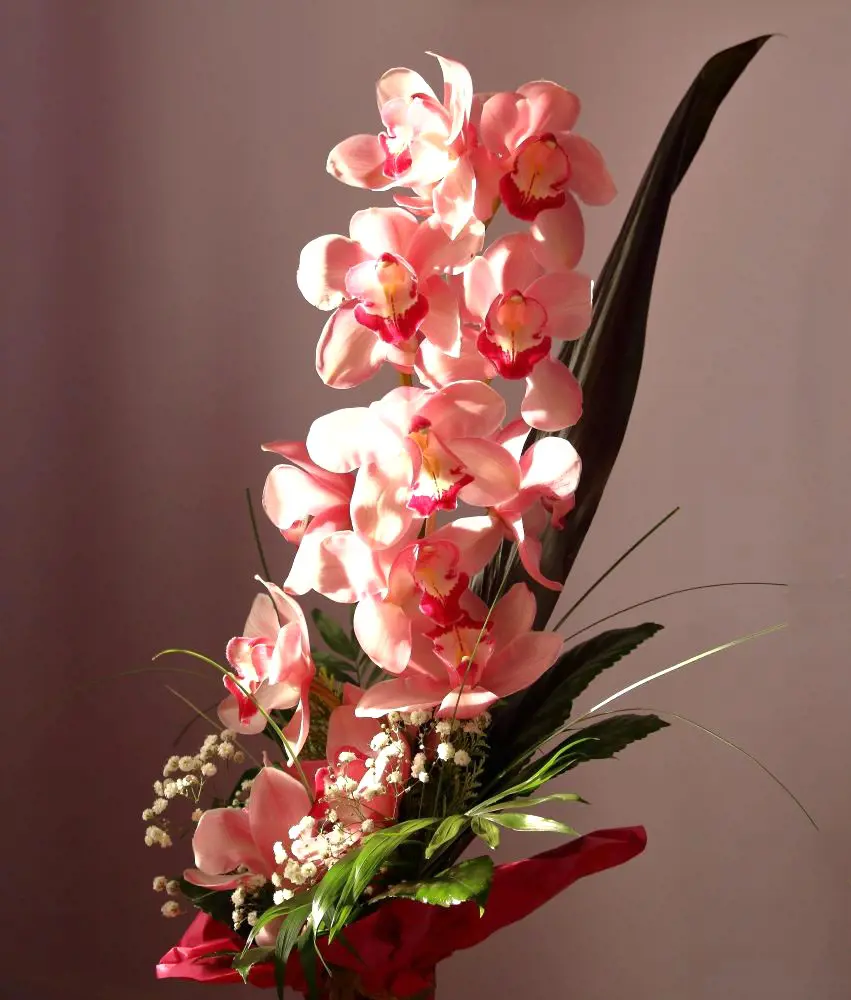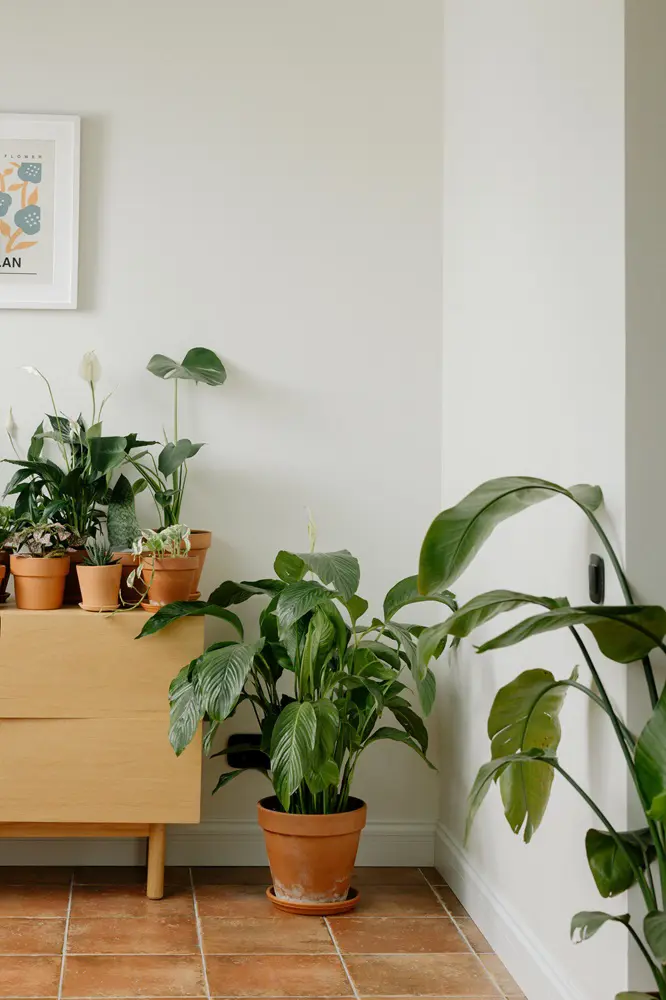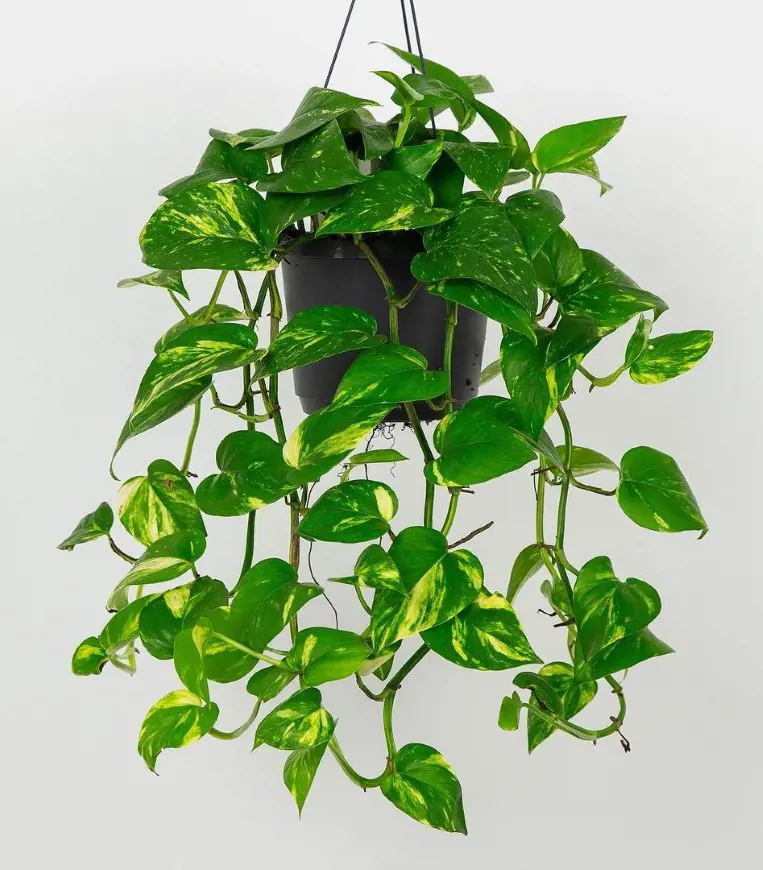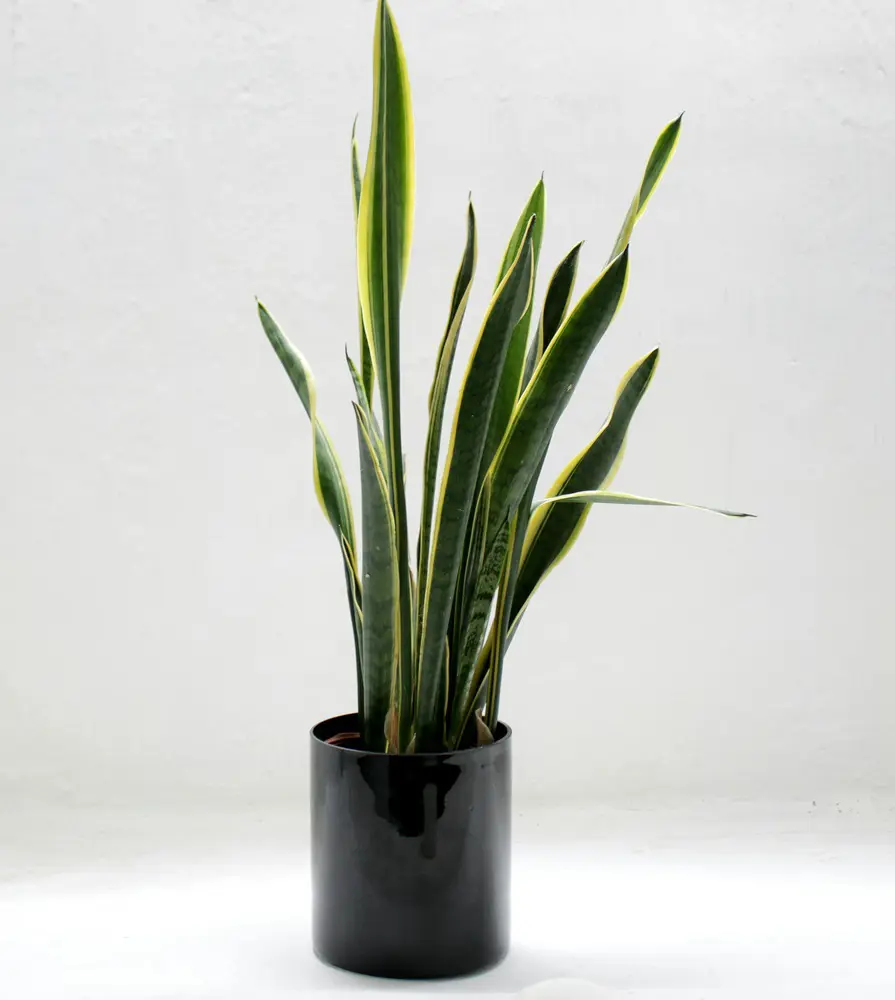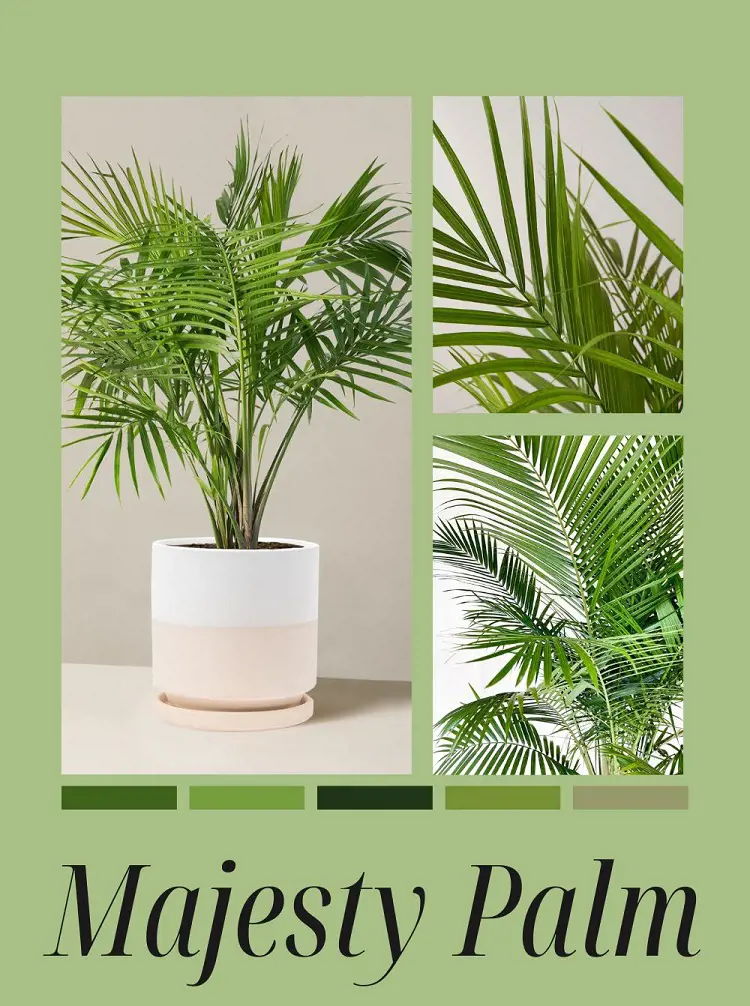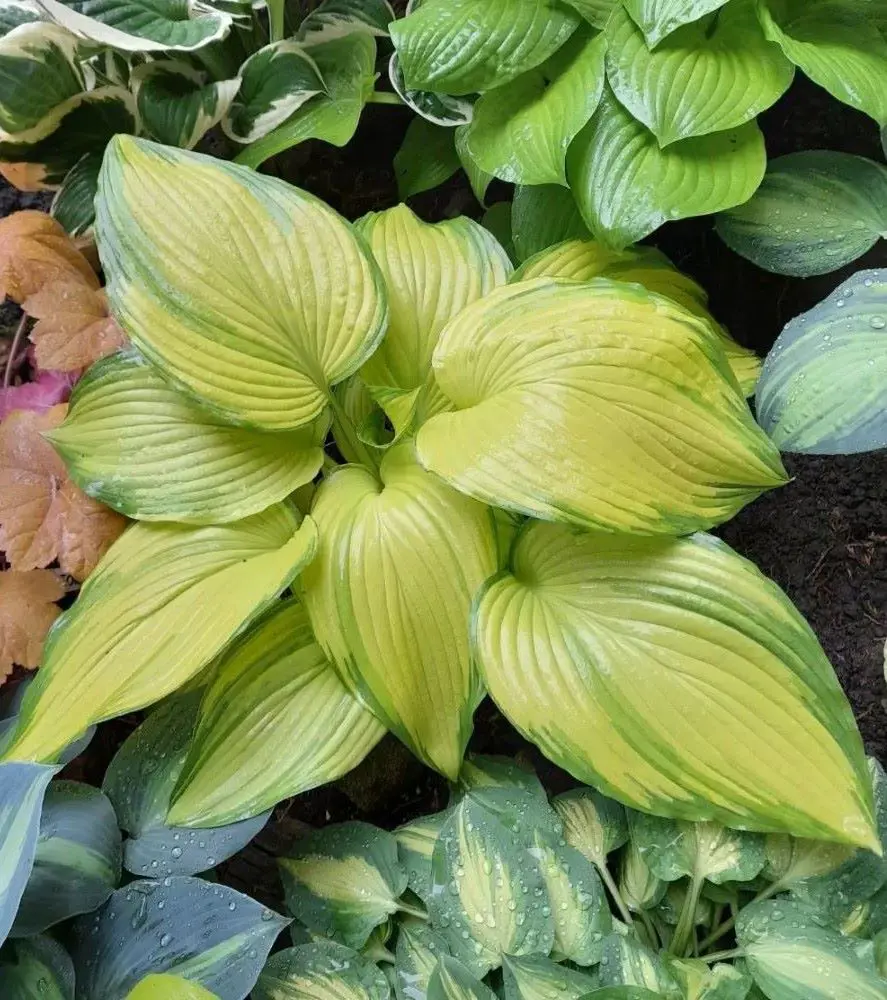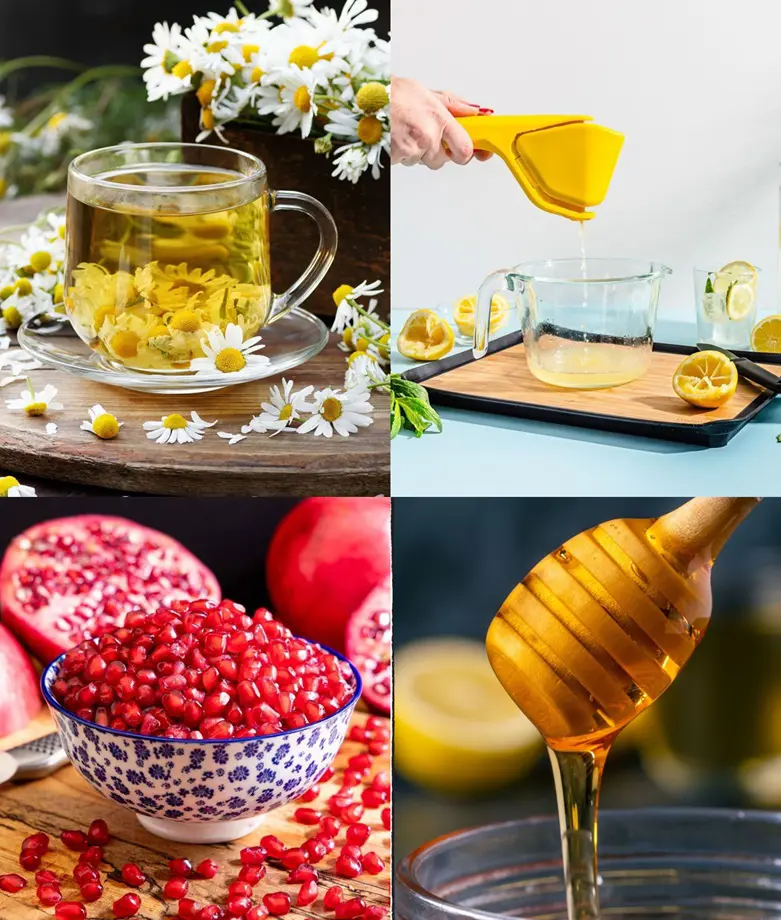Hawaiian Ti Plant Care and Growing Guide
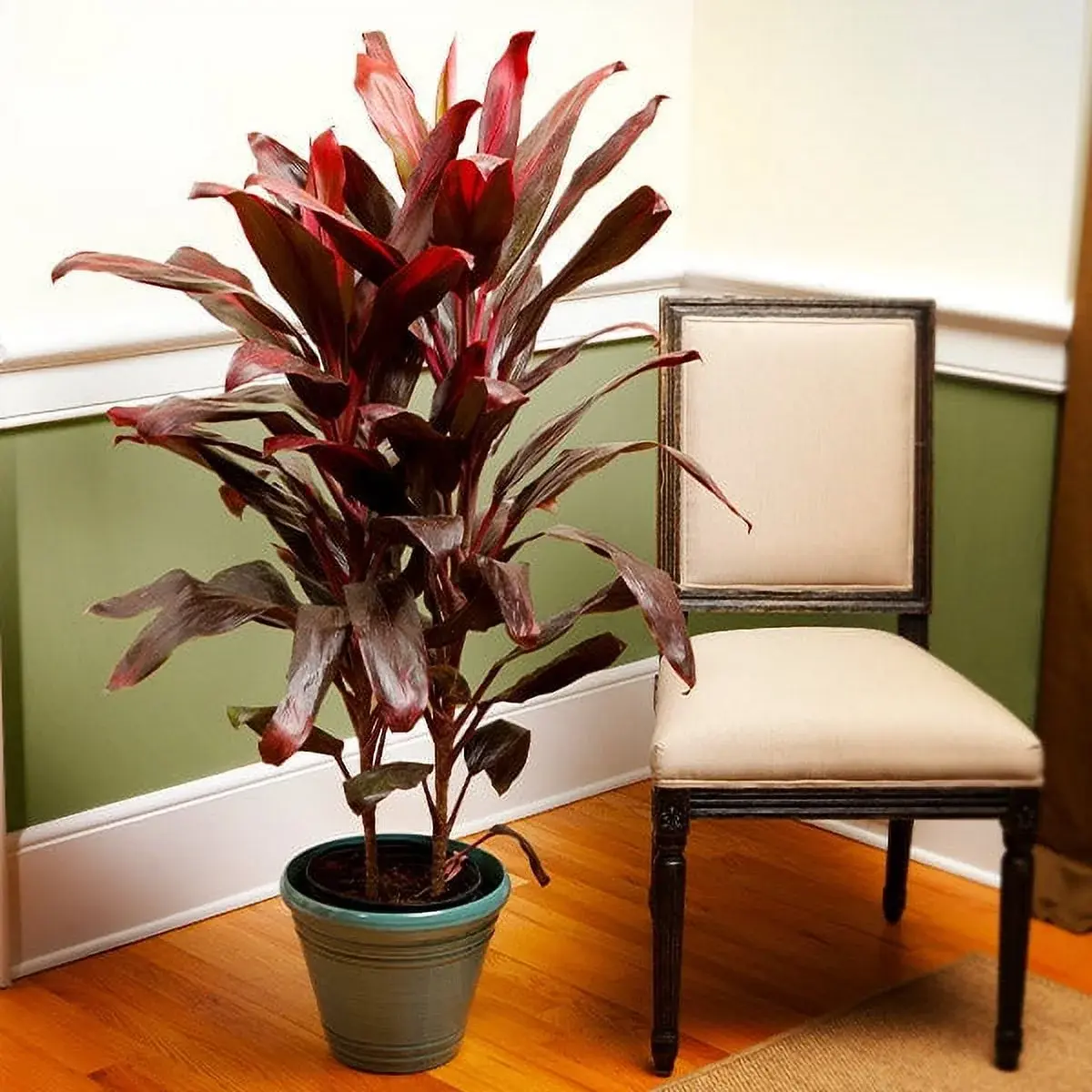
This post may contain affiliate links. If you make a purchase through links on our site, we may earn a commission.
Adding Hawaiian Ti plants can be a great option if you want to bring tropical vibes to your place. This is an easy plant to grow that won't require a lot of extra fuss!
Similarly, taking care of Hawaiian Ti plants, especially indoors, is simple when you know a few key things. As we know, these plants are making a comeback as popular houseplants, so understand the few things you need to know to keep them happy, healthy, and thriving for a long time.
Hawaiian Ti Plant
| Common Name | Hawaiian Ti Plant, Ti Plant |
| Botanical Name | Cordyline fruticosa |
| Plant Family | Asparagaceae |
| Plant Type | Evergreen Perennial |
| USDA Hardiness Zones | 10-12 |
| Sunlight Requirement | Bright, Indirect Light |
| Soil Type | Well-draining, Lightweight Potting Mix |
| Soil pH | Slightly Acidic To Neutral |
| Mature Size | 4-10 Ft. (Height), 2-4 Feet (Spread) |
| Native Area | Southeast Asia, Pacific Islands, Australia |
What Is A Hawaiian Ti Plant?

The Hawaiian Ti is an exotic tropical plant known for its colorful and fancy leaves that make it look like a mini palm tree. Despite its name, the plant is not native to Hawaii and, instead, comes from places like Southeast Asia, Australia, and New Zealand.
Gardeners adore this plant because its leaves have cool stripes in colors like pink, purple, and dark green. There is also a belief that having this plant brings good luck, and it's a great choice for both new and experienced gardeners. Plus, it adds a splash of colorful and exotic vibes to any home.
Hawaiian Ti Plant Care
Hawaiian Ti plants, when grown indoors, are low-maintenance but thrive with proper care. Ensure they receive bright, indirect light, and use a well-draining potting mix. Keep the soil consistently moist, allowing the top inch to dry between watering.
Maintain a warm, humid environment and feed a balanced liquid fertilizer every 4-6 weeks during the growing season. With these conditions, your Hawaiian Ti plant will flourish.
Light
To maintain the beautiful pink hues of your Hawaiian Ti plant, providing the right amount of light is crucial. Choose a spot in your home with bright, indirect light, especially in east or west-facing rooms. Position the plant approximately 3 feet away from the window, ensuring it receives a minimum of 6 hours of indirect sunlight daily.
If the plant is kept in the shade, its leaves may become mostly green and lack vibrancy. Conversely, too much direct sunlight can lead to leaf scorching, causing them to curl and develop brown edges.
Soil
Select a soil mix for your Hawaiian Ti plant that promotes good drainage and aeration to prevent root rot. To achieve an ideal blend, combine nutrient-rich potting soil with perlite, adding in other enhancements like bark, coir, or sand to further enhance drainage.
This mix ensures the soil remains loose and well-aerated, minimizing the risk of compaction and potential root issues. Choosing the right soil composition supports a healthy environment for your Hawaiian Ti plant, allowing it to thrive without the threat of root rot that can occur in dense or waterlogged conditions.
Water
Keep your Hawaiian Ti plant's soil consistently moist, but not soaking wet. Allow the soil to slightly dry between waterings to prevent issues like root rot and pesky pests. To check if it's time to water, stick your finger into the soil; if the top inch feels dry, it's watering time.
Be mindful of reducing watering in winter when the plant slows its growth. Ti plants might not like tap water as it can cause yellow spots and stunted growth. If you have hard water, consider using rainwater or distilled water for a healthier, happier plant.
Fertilizer
Feed your Hawaiian Ti plant monthly from early spring to late summer using a liquid fertilizer with a balanced 10-10-10 nutrient ratio. Alternatively, explore the suitability of 46-0-0 or 0-0-60 fertilizers. This regular feeding provides essential nutrients to support healthy growth during the plant's active growing season.
Temperature
Select a spot for your Hawaiian Ti plant where temperatures consistently range between 65°F and 80°F (18°C to 27°C). Avoid areas with sudden temperature changes, like drafty spots, near radiators, or under AC vents. Since this tropical plant is sensitive to cold, ensure the room temperature doesn't drop below 60°F (15°C) during winter.
Humidity
The Hawaiian Ti plant should do well in the average humidity levels of your home, typically without needing additional moisture. Ensure it's not placed near a radiator or under an AC vent to prevent potential drying effects. As long as you avoid extreme conditions, the standard humidity in most homes should provide a suitable environment for your Ti plant to thrive.
Pruning
Make sure to trim your Hawaiian Ti plant regularly to make it look nice and full, and also to stop it from getting too tall. The best time to do this is in spring when the plant is starting to grow a lot. Use a sharp knife to cut the stem to the height you want, around 12 inches (30 cm) above the soil is okay.
In the summer, new stems will grow around the cut, making your Ti plant look full and bushy. Keep the leaves shiny and colorful by wiping them with a wet cloth to get rid of any dust. Trim any yellow or damaged leaves, especially the older ones at the bottom, all year round.
Propagating Hawaiian Ti Plant
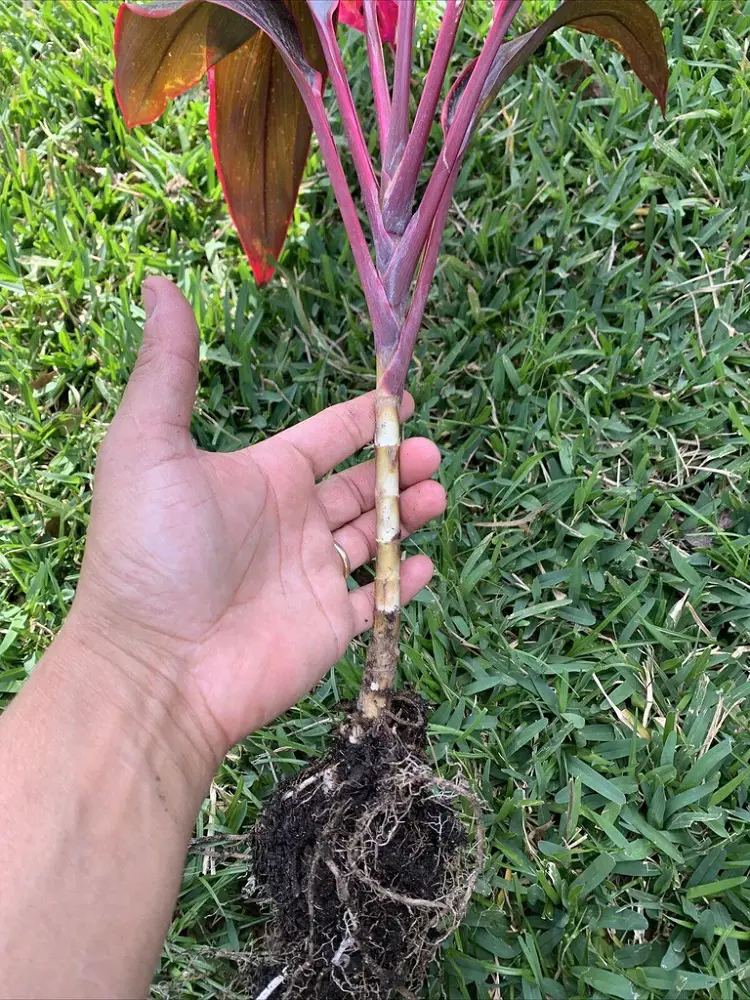
Making more Hawaiian Ti plants is easy through a process called propagation. Here's a simple guide:
- Use a sharp knife to cut a stem at least 2 inches (5 cm) below the bottom leaves.
- Put the cut stem in a glass of water.
- Keep the glass in a room with lots of bright, indirect light, and where it's warmer than 65°F (18°C).
- Change the water every 2 to 3 days. You can add a bit of hydrogen peroxide to prevent the cut end from rotting, but if you change the water regularly, it should be fine.
- Hawaiian Ti plants grow new roots quickly, so you might see them in as little as seven days.
- Keep the cutting in water for a couple more weeks after the roots appear.
- Once the roots are at least 2 inches (5 cm) long, your cutting is ready to be planted in soil.
You can also make new Ti plants from stem cuttings that have no leaves, especially if your Ti plant has grown really long and leggy.
Potting and Repotting
As the Hawaiian Ti plant grows quickly when they are young but slows down as it matures, repotting becomes essential for maintaining its health and growth. When young, consider repotting every two years, and once the plant surpasses 3 feet (90 cm) in height, shift to a 3 to 4-year repotting cycle.
Opt for a container about 2 inches (5 cm) wider than its previous one. While Hawaiian Ti plants can reach up to 13 feet (4 meters) in height outdoors, indoor growth is more contained, typically reaching around 6 feet (1.8 meters). Regular repotting ensures ample space for root expansion, promoting a thriving plant.
Pest Control
Watch out for tiny spider mites and scale insects that might bother your Hawaiian Ti plant. If you spot them, don't wait; use soapy water or neem oil to get rid of them right away. Also, make sure the air around your plant can move well to stop any fungal diseases.
Imagine it like giving your plant enough space to breathe so it stays healthy. By keeping an eye on these things and taking quick action if you see any bugs, you're helping your Hawaiian Ti plant stay strong and happy.
Winter Care
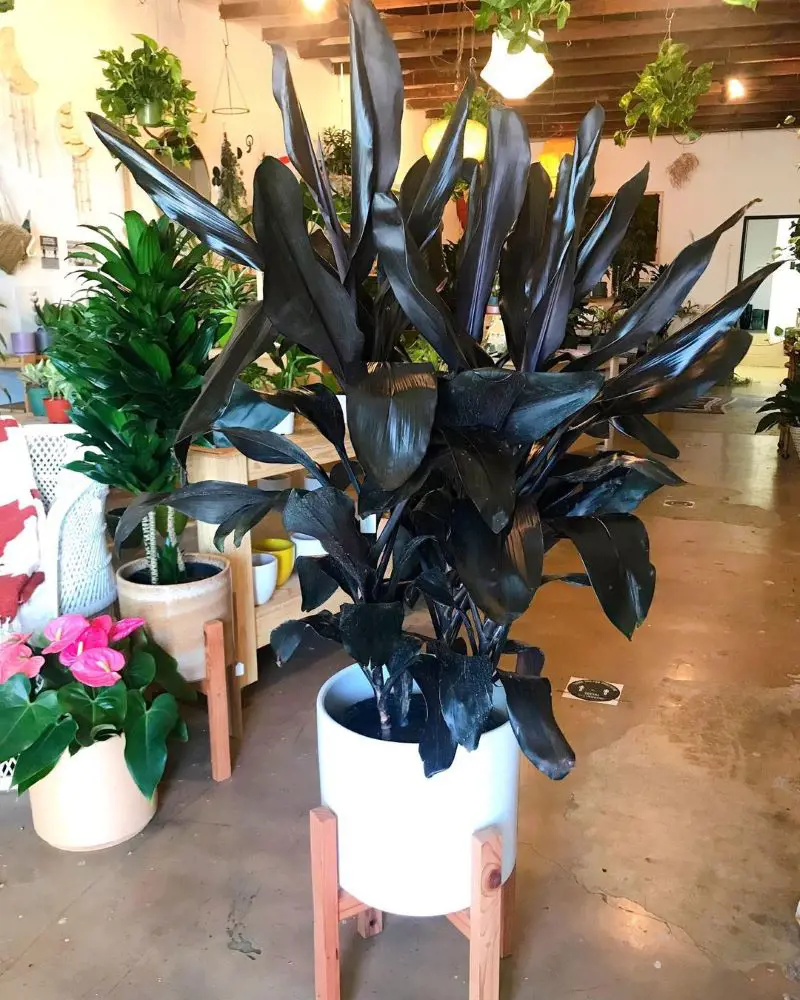
When it gets really cold (below 50 degrees Fahrenheit) in your area during winter, you should bring your plants inside or make them ready for winter. If your place might have sudden cold weather, cover the plant's roots with about 6 inches of mulch.
You can also use a cover or tie the leaves together to shield them from strong winds or freezing water. Whether your plants are inside or outside, don't give them plant food in the fall and winter because they naturally grow slower during this time. This helps keep your plants healthy and happy during the chilly months.
Grow Hawaiian Ti Plant From Seed

Growing Ti plants (Cordyline fruticosa) from seeds is a rewarding process. Here's a simple guide:
- Seed Selection: Choose high-quality Ti plant (Cordyline) seeds from a reputable source or collect them from mature plants. Ensure the seeds are fresh and viable.
- Seed Preparation: Soak the seeds in warm water for 24 hours to enhance germination. This softens the seed coat and promotes better seedling development.
- Germination Medium: Fill a seed tray or small pots with a well-draining, sterile seed-starting mix. Make small indentations in the soil to plant the seeds.
- Planting Seeds: Place the soaked seeds in the indentations and cover them lightly with a thin layer of soil. Mist the surface with water to keep it moist.
- Warm and Humid Environment: Provide a warm and humid environment for germination. Use a plastic cover or a humidity dome to create a greenhouse effect. Keep the soil consistently moist but not waterlogged.
- Transplanting: Once seedlings have developed several leaves and are sturdy enough, transplant them into larger containers with well-draining potting soil. Gradually acclimate them to outdoor conditions if you plan to grow them outside.
Hawaiian Ti Plant Flower
The Hawaiian Ti plant is capable of flowering, but it is not particularly known for its showy flowers. The plant is more renowned for its vibrant and colorful foliage rather than its blooms.
The flowers of the Ti plant are small and inconspicuous, usually appearing on long panicles. The primary attraction of the plant is its striking leaves, which come in various colors such as green, red, pink, and purple.
If you are specifically interested in the ornamental aspect of the Ti plant, focus on its foliage, as that is the main feature that adds beauty to gardens and indoor spaces. However, flowering may occur under certain conditions, and the appearance of the flowers is generally not the highlight of this plant.
Hawaiian Ti Plant Types

Several popular types of Hawaiian Ti plants, also known as Cordyline fruticosa, are cultivated for their unique foliage colors and patterns. Some notable varieties include:
Cordyline fruticosa 'Red Sister': Known for its striking reddish-pink leaves, adding vibrant color to indoor and outdoor spaces.
Cordyline fruticosa 'Kiwi': Exhibits bright green and yellow variegated leaves, creating a tropical and lively appearance.
Cordyline fruticosa 'Hawaiian Boy': Features deep green leaves with red edges, providing an eye-catching contrast.
Cordyline fruticosa 'Chocolate Queen': Recognized for its rich, chocolate-colored foliage, offering a unique and elegant touch.
Cordyline fruticosa 'Mauna Loa': Showcases green leaves with pink and cream stripes, adding a playful and colorful element to gardens or interiors.
Cordyline fruticosa 'Black Magic': Characterized by deep maroon to almost black leaves, creating a dramatic and sophisticated appearance.
Challenges And Issues With Hawaiian Ti Plant
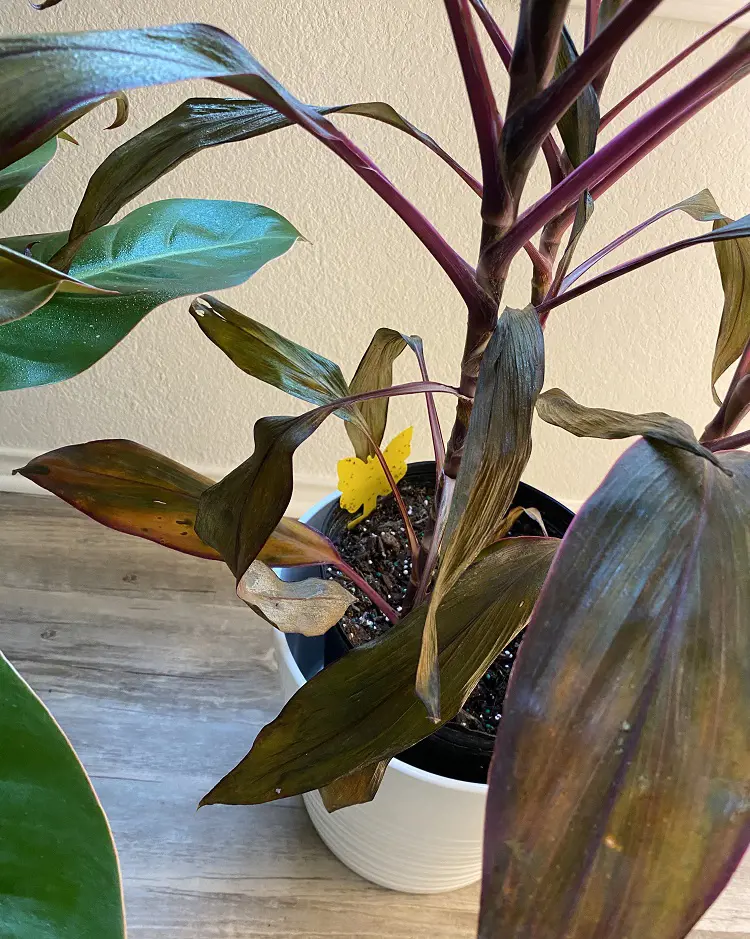
Common problems when growing Hawaiian Ti plants include:
Yellowing Leaves
Overwatering or poor drainage can lead to root rot, causing yellow leaves.
- Solution: Allow the soil to dry out between waterings, and ensure the pot has proper drainage.
Leaf Browning or Burn
Direct sunlight or exposure to harsh sunlight can cause leaf tips to brown.
- Solution: Provide filtered or indirect sunlight, especially during the hottest part of the day.
Pests
Aphids, scale insects, or spider mites can infest Ti plants.
- Solution: Use insecticidal soap or neem oil to control pests. Regularly inspect and remove affected leaves.
Fungal Issues
Excessive moisture can lead to fungal diseases like leaf spot.
- Solution: Ensure proper air circulation, avoid overcrowding plants, and apply fungicides if necessary.
Cold Sensitivity
Ti plants are sensitive to cold temperatures, leading to damage or leaf drop.
- Solution: Protect plants from frost or cold snaps by moving them indoors or using covers. Plant them in pots for easy relocation.
Nutrient Deficiency
Lack of essential nutrients can lead to stunted growth and faded foliage.
- Solution: Fertilize regularly with a balanced, water-soluble fertilizer during the growing season.
Overcrowding
Ti plants may become crowded if not repotted regularly.
- Solution: Repot the plant every 2-3 years to provide fresh soil and more space for growth.
Improper Humidity
Low humidity can result in dry, crispy leaf edges.
- Solution: Increase humidity around the plant by misting the leaves, placing a tray of water nearby, or using a humidifier.
Recent posts
Plant Care
Plant Care
How To Take Care Of An Orchid Plant? 11 Tips And Tricks
If you love gorgeous orchids but are worried they're too high-maintenance, don't worry. This guide is like a cheat sheet for orchid newbies. Forget fancy words and confusing schedules — we're talking about how to take care of an orchid pla...
Plant Care
How To Grow and Care For Peace Lily Plant
The Peace Lily is an indoor plant that is most valued for its beautiful and shiny green leaves as well as the white blooms. Hard and tolerant, it’s naturally a low-maintenance addition to your plant collection. If you are confused, let us tell ...
Plant Care
Pothos Plant Care And Growing Guide
Adding a Pothos plant (Devil’s Ivy) to your home benefits the environment and aesthetic of your personal space. It's easy to maintain and is loved for it's ability to enhance indoor air quality by removing toxins like formaldehyde, benzene, and...
Plant Care
Snake Plant Care and Growing Guide
Snake plants require low maintenance, and low light and are almost impossible to kill, making them a perfect plant for beginners and seasoned gardeners. In this guide, we will explore essential care tips and optimal growing conditions for snake plant...
Plant Care
How To Plant, Grow and Care Majesty Palm
The majestic palm, scientifically known as Ravenea rivularis, makes for a stunning indoor tree with its lush and grand fronds. Originating from Madagascar's river banks, this resilient houseplant is cherished not only for its beauty but also for its ...
Plant Care
How To Grow And Care For A Hosta Plant
Hosta plants are widespread perennials, often grown for their beautiful and diverse foliage. They are extremely easy to care for and can thrive in various conditions, particularly shade or semi-shade. These hardy plants can last for many years and re...
